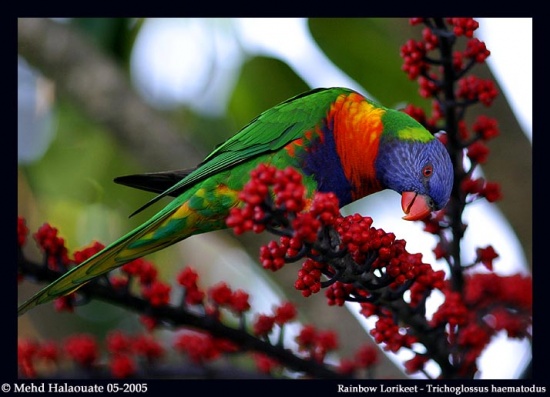- Trichoglossus haematodus
Identification
The Rainbow Lorikeet is up to about 14 inches (35 cm) long. They weigh about 5 ounces (133 grams). These parrots have brightly-colored red, green, blue, yellow, and orange feathers; the curved bill is red. The males and females are hard to distinguish.There are 2 to 3 white eggs in each clutch (a set of eggs laid in one nesting period). The eggs are laid in a tree cavity high above the ground. The female incubates the eggs for 25-26 days, and the male feeds her. Both parents will feed the chicks. In the more images URL there is a photo of Trichoglossus rubritorquis (Red-collared Lorikeet) a recent split.
Distribution
The Rainbow Lorikeet is widely distributed along the coastal strip from. Cape York south to Victoria and into South Australia. It is often abundant from Sydney northwards, but is becoming rarer south of Sydney. An increasing population around Perth, in Western Australia, is thought to be derived from escaped aviary birds.
Taxonomy
Habitat
The prefered habitat is coastal forests as well as urban gardens.
Behaviour
Noisy flocks of up to several hundred may congregate in flowering trees to feed and roost, at times in the company of Scaly Breasted Lorikeets. Breeding in the wild is from August to January.




